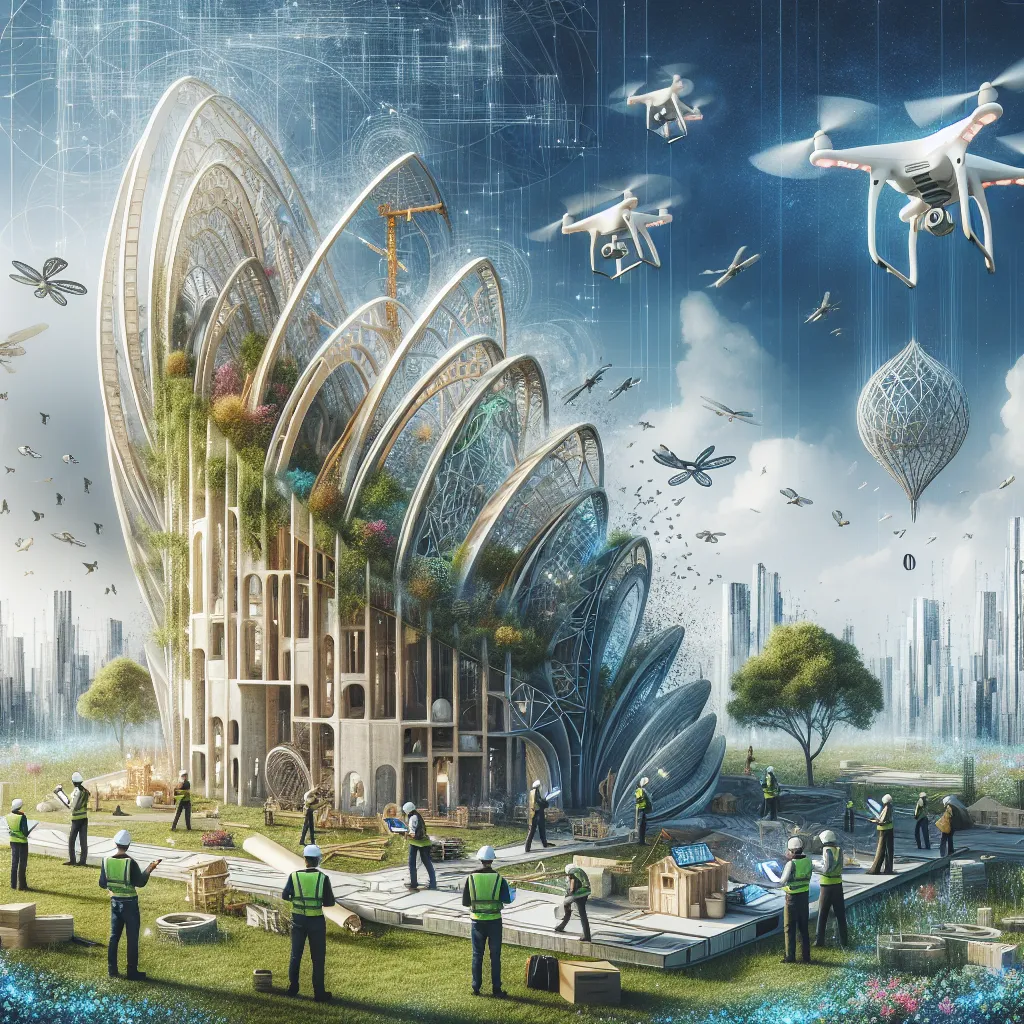
- Published on
- Authors

- Name
- Con Tech News
How to Leverage Construction Technology for Effective Team Collaboration
When you think of construction, images of hard hats, steel beams, and blueprints might come to mind. But the construction industry is rapidly evolving thanks to cutting-edge technology. One of the most exciting transformations is in how teams collaborate. In this post, we'll explore how leveraging construction technology can significantly enhance team collaboration, streamline operations, and drive project success.
The Evolution of Construction Technology
Traditional construction projects often suffered from communication breakdowns, inefficiencies, and errors. However, modern construction technology has brought a seismic shift, offering advanced tools that are transforming how teams communicate and collaborate. Here are some of the key innovations:
Building Information Modeling (BIM)
What is BIM?
Building Information Modeling (BIM) is a digital representation of the physical and functional characteristics of a facility. It provides a shared knowledge resource for information about a facility, forming a reliable basis for decisions during its lifecycle.
How BIM Enhances Collaboration
- Centralized Information Repository: BIM serves as a single source of truth for all project information, ensuring that all stakeholders have access to the same data.
- Real-Time Updates: Teams can make real-time updates, which are immediately visible to all stakeholders. This reduces misunderstandings and ensures everyone is on the same page.
- 3D Visualization: The 3D models created with BIM make it easier for teams to visualize the project, identify potential issues early, and brainstorm solutions collaboratively.
Cloud-Based Project Management Tools
Why Cloud Matters
Cloud-based project management tools provide a platform for construction teams to manage projects from anywhere, at any time. This flexibility is crucial for modern construction projects that involve multiple stakeholders and locations.
Key Features for Collaboration
- File Sharing and Document Control: Tools like Procore and PlanGrid allow teams to store, share, and control access to important documents, ensuring that the most current versions are always at everyone's fingertips.
- Task Management and Scheduling: These tools enable teams to assign tasks, set deadlines, and monitor progress. Integrated calendars and schedules help keep the project on track.
- Communication Channels: Built-in messaging and notification features streamline communication, making it easy for team members to stay in touch and informed.
Mobile Technology
The Power of On-The-Go Access
Mobile technology has revolutionized the construction industry by enabling teams to access project data, communicate, and collaborate in real-time, regardless of their location.
Mobile Apps for Collaboration
- Field Data Collection: Apps like Fieldwire and Raken allow workers to collect and share field data such as site observations, daily reports, and incident reports directly from their mobile devices.
- Instant Messaging: Mobile messaging apps ensure that any issues or updates can be communicated instantaneously, reducing delays and improving response times.
- Augmented Reality (AR): AR applications bring project blueprints to life, allowing users to visualize complex construction elements directly on site, facilitating better understanding and collaboration.
Drones and Robotics
Taking Collaboration to New Heights
Drones and robotics are not just for the tech-savvy; they are becoming indispensable tools in the construction industry for enhancing collaboration.
Applications in Construction
- Site Surveys and Inspections: Drones can capture high-resolution images and videos, providing real-time data that can be shared with the entire team for faster decision-making.
- Automated Tasks: Robotics can handle repetitive tasks such as bricklaying or concrete pouring, freeing up human resources for more strategic roles and collaboration.
Virtual Reality (VR) and Mixed Reality (MR)
Immersive Collaboration
VR and MR technologies offer immersive experiences that can significantly improve how teams collaborate on complex construction projects.
Benefits of VR and MR
- Virtual Walkthroughs: With VR, stakeholders can take virtual walkthroughs of a project before it's built, identifying potential issues and brainstorming solutions collaboratively.
- Mixed Reality On-Site: MR combines the digital and physical worlds, allowing teams to overlay digital models onto physical spaces, providing a more comprehensive understanding of the project in real-time.
Conclusion
The integration of advanced construction technologies is transforming the way teams collaborate, making operations more efficient and projects more successful. From BIM and cloud-based tools to mobile technology and immersive experiences, these innovations are not just enhancing collaboration; they are redefining the possibilities in construction. As we embrace these technologies, the future of construction looks brighter, more connected, and radically more efficient.
By leveraging these cutting-edge tools, construction teams can achieve unprecedented levels of collaboration, ensuring that projects are completed on time, within budget, and to the highest quality standards. So, gear up and harness the power of construction technology to take your team collaboration to the next level!
